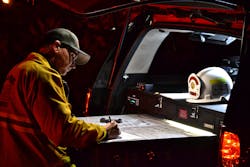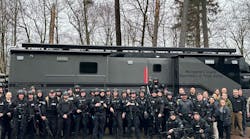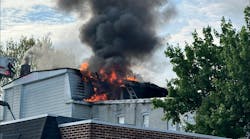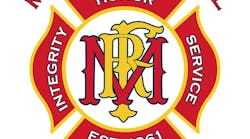When it comes to command and control, the fire service’s organizational culture is a collective effort for decision-making. Within the context of fire organizations, command and control values serve as normative, moral and operational guidelines that help incident commanders (ICs) operate within numerous, all-hazard emergency situations. But there comes a point in the history of every organization that responds to and solves the same command and control problems over and over again, when the organization’s members no longer pause to ask, “Should we solve this one the same way we solved all the others?” Instead, these organizations just assume that the same processes and bases for making decisions that led to prior successes will continue to produce the same results as they always have. And when this occurs—when methods of problem-solving are adopted by assumption, rather than explicit debate and decision—they become the command and control culture of the organization. This is the basis for a department’s “arrogance of success,” or, as physicist William Pollard put it, we “think what we did yesterday will be sufficient for tomorrow.” Clearly, this is not the correct way to progress from being an “OK” department to becoming the best department.
Pride and arrogance = complacency
So how do you determine whether your department has fallen prey to this mindset? One way is to examine the people within your fire organization (ICs, fire chiefs, union presidents, firefighters, etc.) whose heads of arrogance are closely followed by their tails of ignorance. In other words, they’ve become complacent, which can lead to major cultural command and control shortcomings—and tragic outcomes within your agency.
It is this overbearing pride that amazes me. Examples include high-ranking fire service personnel—even some prominent instructors at trade shows speaking in front of impressionable young firefighters—who downplay or make light of firefighter safety, or those who still uphold risky, outdated strategies and tactics.
The tactical superiority problem
In California, there was a display of tactical superiority recently, when firefighters accessed the roof of a large, commercial, long-since-vacant building with no savable life inside. Suddenly and without warning, a portion of the roof of the building collapsed, and four firefighters rode the roof to the building interior—and to the seat of the fire. The four firefighters were injured, one burned severely.
The department’s after-action report included the following findings:
- Strategic and tactical decisions did not take into account extended forcible entry operations.
- Tactical decisions did not keep pace with evolving fire conditions.
- Coordinated firefighting operations were hampered by fragmented communications between roof ventilation and interior operations.
- Decisions to perform specific firefighting tasks were not consistent with the strategy and tactics required to control the incident.
Often after something like this happens, it’s clear how decisions were made based on what had been done in the past—not based on what made the most sense for the situation.
Avoiding accountability
Another offensive display of self-importance is the fire chief who, during a news conference, reports the findings from an investigative report where firefighters lost their lives due to an early “roof failure” collapse. In some cases, those conducting the investigation and the chief deny any wrongdoing, with the chief saying they were relieved to see that nothing within the investigative report negatively identified with the decision-making, risk management and incident command process. Really? The early threat caused by fire burning structural members poses an extreme collapse risk, and therefore puts firefighters in vulnerable tactical positions with tremendous consequences. From a command and control perspective, this is where the arrogance of success has to stop and the command and control decision-making process begins. That is why ICs are required by NFPA 1561: Standard on Emergency Services Incident Management System and Command Safety to implement the incident priorities, which drive all of the forthcoming incident action plan (IAP) decisions.
What are you fighting for?
I’m in total agreement with the belief that our primary mission is to save savable lives; however, I do not support the attitudes that we operate in an “at all costs” mode, because that mentality influences our next tactical action. We will risk our lives to save total strangers, but we should risk nothing to save nothing! We save lives through an aggressive primary (and very rapid) search of the structure. But when you have approximately 15 minutes (as the investigative report identified from the aforementioned roof collapse) to carry out specific tactics, the threat/vulnerability level has to be evaluated, and the decision must be made by the IC to withdraw, reposition or remove firefighters from underneath the collapse hazards. As an IC, I’m fighting to win, but winning includes fighting to keep firefighters’ names off memorial walls and reducing firefighter injuries. And I’m not just shadow-boxing or talking a good story; this is what separates “OK” departments from the best departments. The war is between good intentions and bad actions and outcomes. We’ve all been guilty of exuding arrogance, overconfidence, complacency, invincibility and self-importance. We must fight to produce a smarter, safer command and control algorithm—a set of rules that can help ICs navigate their command environments of chaos. So, how do we accomplish this?
An effective command algorithm
First, the fire service has to stop using a “tactical platform” as a primary decision-making method on the fireground. Tactics do not drive your next decision; rather, your incident’s priorities do, as outlined in your IAP.
There is overwhelming, documented evidence of firefighters who fight defensive fires in offensive positions and with no savable lives to save. Of course, I’m not advocating the use of defensive strategies for all fires, fighting all fires from the outside without risking our lives to save a savable life, nor to risk a fire service fall from public grace and/or the loss of our identity. But we should use some command and control wisdom as our primary weapon when establishing an IAP.
IAP: priorities and strategies, step by step
Step 1: The first step in developing any IAP is determining what every strategy, tactic and task performed on the fireground should be driven by—the incident priorities! The incident priorities may vary depending on the type of emergency, but for a building fire, the incident priorities should include life safety, incident stabilization (through fire control), property preservation and environment.
The number one priority, of course, is life. It is why we, as firefighters, have taken an oath swearing that we will risk our lives, sometimes greatly, to save the lives of total strangers. The act of saving a life also requires us to ask ourselves some simple questions:
- Do people need rescue? If so, how many?
- Are there trapped or missing individuals?
- Do they need to be evacuated, or can they shelter in place?
After aggressive primary and secondary searches are completed, and confirming that all occupants (life) have been removed from the building, it is then the fire chief’s and/or commanding chief officer’s responsibility to transition the incident priorities into incident stabilization (through fire control). This is the most critical transitional phase, because it is at this point that the incident scene and everyone on it “down-shifts” to a lower gear, especially while operating off a tactical platform. The tempo of the incident goes from high risk to a more controlled pace. This is also when a “temporal shift” needs to take place in everyone’s brain, and where good command/control habits are demonstrated by establishing controls to mitigate identified hazards so that the next tactical action won’t kill or injure a firefighter. Too often in the fire service, we don’t accept the need to “down-shift,” instead moving forward with the same tactical actions that started the incident, even when those actions could place firefighters in danger.
Step 2: The second step of an effective IAP involves strategic objectives. This step is what distinguishes the ICs who have a strong plan from those who only operate from a tactical platform, or the seat of their pants. Incident priorities drive strategy, and strategy drives tactics. This positive alignment is missing in many IAPs.
Strategy involves thinking ahead, not in the now. Any successful strategy answers the question, “What are we trying to accomplish?” It can be either a short- or long-term plan of action designed to achieve a particular goal or priority. Strategy is used to make a problem easier to understand and solve; it also includes choices that directly affect tactical outcomes.
The way to express a strategy may look/sound something like this: Safely remove all occupants from the building; keep the fire to the room, floor, area or building of origin; extinguish and confine the fire in building one; protect and defend the five uninvolved exposure buildings.
The IC has the responsibility of communicating this strategy to all companies on scene. For officers, understanding the leader’s intent will help you determine how to use limited time, resources and energy, because you just can’t do everything. But before you can accept an assignment, you must have a clear understanding of the IC’s intent on the fireground; if you don’t, how can you properly communicate the tactical/task assignments to your crewmembers?
Step 3: The third step of an effective IAP involves the incident’s tactical objectives. This seems to be the place where ICs excel, because they feel most comfortable with making tactical decisions. Unfortunately, heavy emphasis is often placed on assigning resources, many times without purpose or relevance to the IAP’s strategy and/or incident priorities.
A tactical objective may sound something like this: Primary search second floor; fire attack (confine and extinguish first floor), forcible entry (open roll-up doors on “B” side), recon and report on conditions, ladder the “C” side, ventilate to support search and fire attack.
This is the critical portion of the IAP, because it directs fire companies (and company officers) when performing tactics and tasks on the fireground, both inside and out of the building. This is also the “critical interface” between the company officer and the IC where good communication has to take place. Why? Because the company officer is observing the changing fire conditions and searching for missing or trapped occupants while trying to locate, confine and extinguish the fire. Fire companies should therefore be utilizing their situation awareness (and experience) while performing tasks, amid the elements and within a limited amount of time and space.
Final thoughts
Tactical adjustments are determined by the incident priorities and strategic objectives (aka, the leader’s intent). For example, if the IAP has identified an incident’s priority as saving life and the strategic objective is to remove all occupants from the involved building and surrounding exposures, your company’s tactical objectives may include performing a primary search. After a primary search is complete and no occupants are found, your tactical objectives will need to be adjusted or reassigned, thereby readjusting the required task. From this point on, you establish and implement greater control/mitigations for many of the hazards on the incident. These actions in the tactical environment provide much greater firefighter safety and still accomplish the given assignments.
Sidebar: Ask Questions to Determine How to Adjust Your Objectives
On your next fire, when in the seat of command, use this evaluation process by asking yourself a couple of key questions:
- Are the tasks in alignment with the tactical objectives?
- Are the tactical objectives in alignment with the strategic objectives?
- Are the strategic objectives in alignment with the incident priorities?
With the answers to these questions, an IC will know immediately where and how to adjust their IAP.






